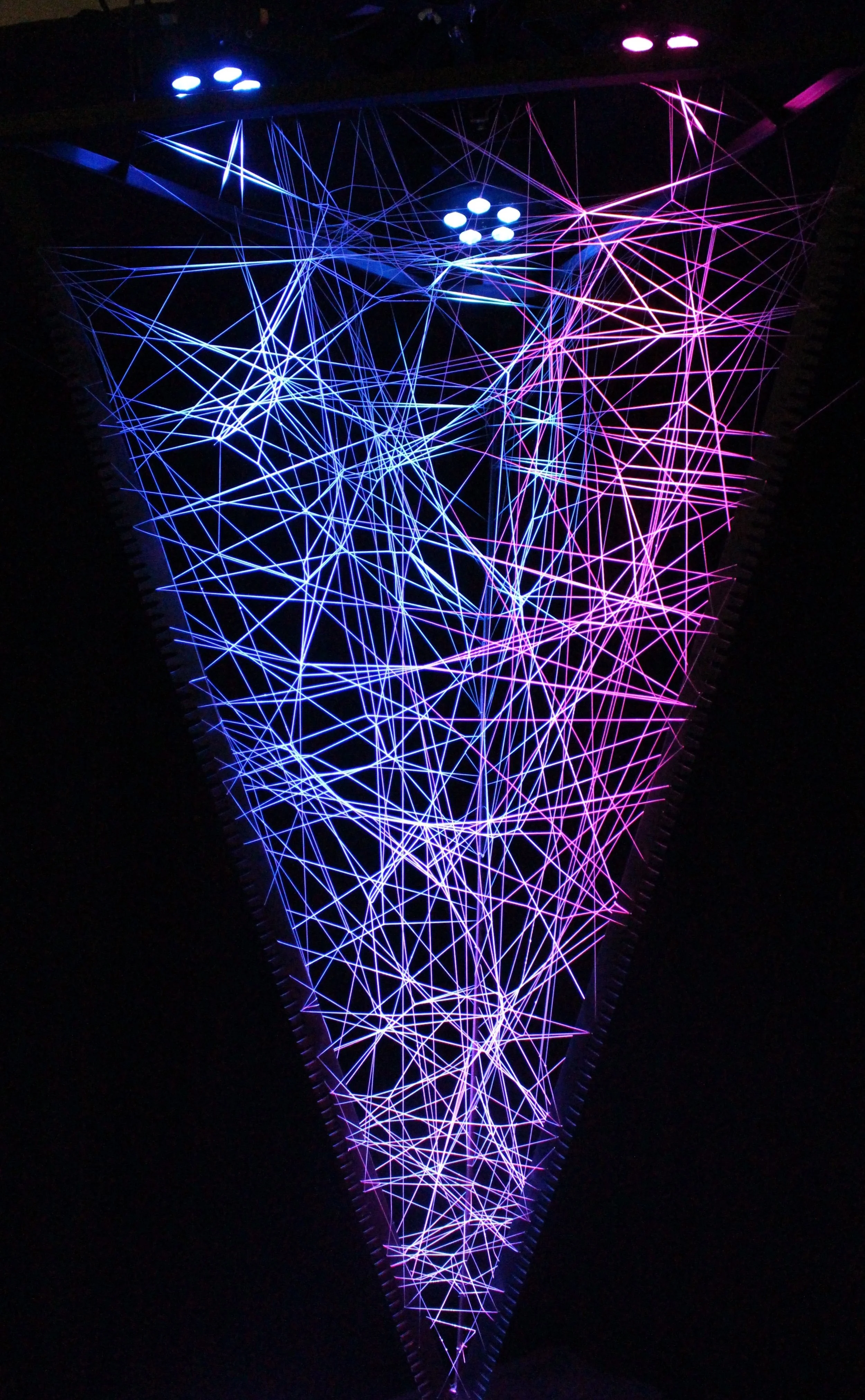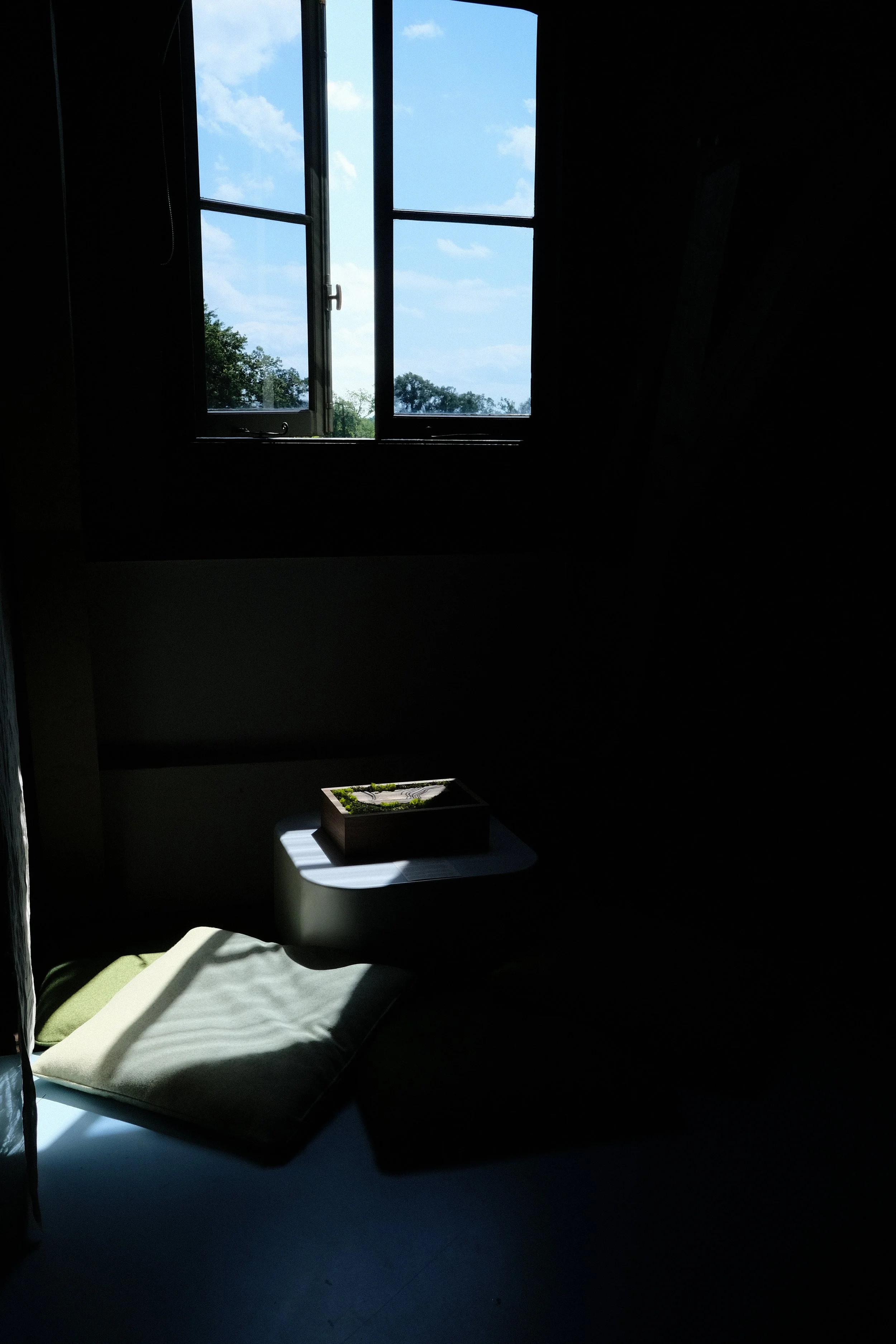HKU University of the Arts Utrecht
projects 2024
How far can acoustics go?
Finalist Project
Jeremy Leung
How far can acoustics go? irido utlizes Computational Acoustics commonly employed among the most celebrated concert halls in the world, coupled with lab measurements at TU Delft to make informed decisions on acoustic properties, offering a level of portability and modularity that surpasses traditional surface diffuser counterparts (i.e. QRD and skyline) and conventional physical acoustic effects (i.e. echo chamber and corridor). Named irido, the acoustic installation aims to enhance audio/acoustic experience in enclosed spaces and is designed to be circular, modular and portable. This is a MVP that only exist in one space at a time, meant to serve as placemaking tool and optimize acoustics for music performance. By community engagement and experimenting, irido is leveraging serendipity to inspire others to adopt or design their own circular acoustics treatment.
Nature Calls
Jobke van der Veen, Irem Pinarbasi
Nature and humans meet each other in a harmonious dance. Guided by a ritual, the earth whispers its secrets. Beneath the gentle melody of the wind and flowing water, a serene unity emerges. This film honors the delicate relationship between nature and humans in an enduringly loving connection.
We Are the Ecology
Mark Datema, Vincent van der Geest, Lelah van Eijnsbergen
We Are the Ecology aims to turn an entire exhibit space into a thriving ecological soundscape. The exhibition space will reverberate with the sound of a fictional ecology and the visitors have an influence on this living soundscape. The more noise the visitors make, the more the animals in the fictional ecology will fade into the background and only ambient noise will be heard. When visitors are quiet, the animals slowly come back as a representation of the restoration of ecological balance. If too much noise is made by visitors for too long, some animal species may not return. At the end of an hour, the ecology renews and the visitors get another chance at balance. This sound system consists of a multiple speaker setup (playing the sound of the animals and ambience) and a microphone that measures the loudness of the visitors.
Ode aan de schelp
Robin Woessner
"Ode aan de schelp" is a short film from the perspective of a shell, showing its challenges and future. In the mixed media installation, the effects of ocean acidification on shellfish are shown through ceramics, film, and projection. The installation includes ceramic pieces with sand glaze to show ocean acidification, and visuals are projected on the ceramics to represent chemical reactions that mimic ocean acidification.
Living Wonders
Noor de Ruijter
Living Wonders is an installation translating views of the natural world into creations that appeal to the imagination. Each animal has developed unique methods of using light for survival, communication and reproduction. These methods are functional and at the same time beautiful in their display. In this project, three light objects were created that represent different light phenomena in animals. The Luminous School shows how schools of fish use light reflections for coordination and protection. WebWeave reveals the complex patterns of spider webs under UV light, which aid in prey capture. ChromaWing emphasizes the iridescent colors of butterfly wings through nanostructures that refract and scatter light. Living Wonders project is an invitation to look deeper, understand and appreciate how ingenious the natural world around us is.
Plant Cohabitation
Sen van der Heide
‘Plant Cohabitation’ is a work by Sen van der Heide, offering the audience a moment to reflect on the plants that surround us in our daily lives. By using specialized microphones, Sen van der Heide captures the ultrasonic sounds of plants and transforms them into frequencies audible to humans. In this installation, the visitor has the unique opportunity to interact with the plant and engage in a dialogue. The work invites us to look at and listen to our green companions in a new way, discovering the invisible and unheard sounds in our everyday environment.
Insecta Esthetica
Eline Flick
Insecta Esthetica is an art piece and projection mapping installation showing the beauty of insects often overlooked by the human eye. The project visualizes the inside of insects based on their aesthetic value, also serving as a conversation starter about their essential role in our ecosystems in an educational context.
Down to Earth
Rhodé van Eldik
Down to Earth is an immersive installation that aims to give people a different perspective of soil by literally letting them come face to face with it. The installation encourages people to make different choices by letting them experience two extremes of soil health.
In Touch
Jari Deelstra
A tree's lifetime holds a vast amount of experience. In Touch is an interactive installation that immerses participants in connecting with a forgotten tree from Amelisweerd through the memories preserved within its rings. By touching the tree's growth rings, participants trigger memories portrayed from a human perspective, offering a glimpse into the rich history witnessed by the tree throughout its existence. The installation, crafted from local wood laid in with conductive biomaterial, with the auditory installation running on a BELA, immerses participants in the experience. The auditory component incorporates a blend of self-recorded and historical sourced sounds, including birdsongs, babbling water streams, bustling ant nests, and echoes of past events like the local nature conservation strike in Amelisweerd. In line with sustainability principles, when the time comes, the BELA can be easily removed for use in other projects, while the rest of the installation can be directly composted. Through this immersive journey, In Touch aims to foster a sense of connection with nature and encourage reflection on the importance of trees in sustaining life, while inviting viewers to contemplate the impact of human actions on the natural world.
FIRST AID DIY
Rianne de Witte
First Aid DIY addresses keeping yourself mentally healthy within the naked truth of the polluting fashion world. Craftsmanship can heal wounds and offer a regenerative perspective for future generations. These First Aid DIY exercises can be used as a creative tool to embody wisdom, encouraging and inspiring you to visualize feelings of comfort in dangerous situations, to embrace your soul, to reconnect with your environment, and survive in this unstable world. First Aid DIY offers critical reflection focused on survival and revival. The exercises can evoke positive energy and inspiration to take action towards new creative energy and resilience.
Tales in Dirt
Esther van Leeuwen, ARDEMAR
In "Tales in Dirt" ARDEMAR and Esther van Leeuwen, create their own "natural reality", exposing the lack of biodiversity of Dutch manmade nature. The artists collected many soil samples from different areas of Utrecht. These samples are stored in enclosed environments that are allowed to grow whatever seeds and plants that are contained in them, allowing them to grow without any human interaction, a thing that this soil hasn't done for centuries. These are hanged from the ceiling from handmade natural fiber so that people can better observe and immerse themselves with the “environment.” A pair of headphones playing unaltered field recordings of where the soil samples were recorded is also available to further immerse the public.
Common Ground
Rym hayouni
Through her art research studies in scenography, rym explores the earth/land as a web of relations and intersections. ‘Common ground’ is part of this ongoing research. Since last spring, she has been on a journey to collect soil, through farms, gardens, community-run spaces, and urban nooks and crannies.
While soil is a substance that embodies movement, migration, collaboration through the micro-organisms that inhabit it and whose trajectories are constantly being invented and reinvented, rym’s encounter with the different lands she visited and the collection of soil samples led her to question her relationship to the earth and her position within all the enclosures, divisions, borders, possessive and exploitative forces over land.
Moving from collecting to de-collecting, rym invites us to touch, smell, listen and share collectively in search of forms of celebrating the earth that transform dominant narratives of land into a common ground.
Instructor 2024
Shirley Niemans works at the Centre for Creative Technology at HKU and is part of the Art, Technology, and Ecology project group. She developed and ran Lab Pastoe, a new experimental space for materials research and crossovers between techniques, and currently works on the redevelopment of the HKU Biolab. She holds a BA in interactive art and music (KABK and KC, The Hague), and an MA in New Media and Digital Culture. She recently graduated from the BioHack Academy at Waag Amsterdam and is exited to be part of the developments around bioArt, biodesign and circular making.
Kas Houthuijs has a background in neurobiology and biomedical sciences, but his real interest is in the interdisciplinary field of art and ecology. Real innovation happens where the visions of different fields can question and enhance each other. At HKU he teaches BioLab for Designers as a course and at the Waag Future Lab in Amsterdam he teaches the BioHack Academy. Kas believes that artists and designers have great responsibility in the sustainability transition, and he tries to aid this goal through education.
Than van Nispen As a master in both Music and Biology Than van Nispen lectures on both the domains of composition in context, like film and game music, as well as biological and ecological approaches to art, music and sound. Than is a lecturer and researcher at HKU School of Music and Technology where he lectures mostly on Sonic Interaction Design, (interactive) composition in contexts and art & ecology. He is also a music composer for (interactive) live concerts, (art)games and interactive installations.














































































